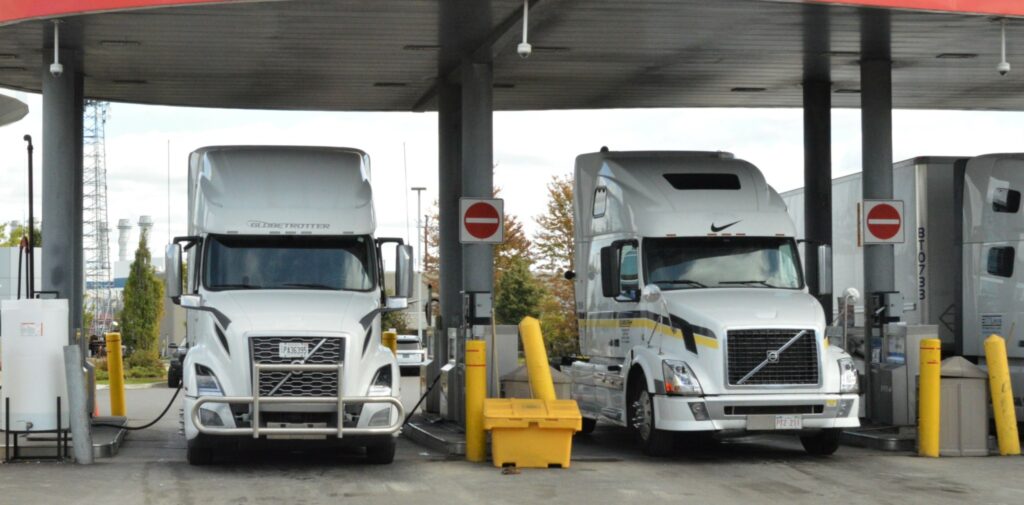Future fuels: Will the ‘messy middle’ become a ‘messy end’?
There has been much discussion of late about future zero-emissions engine technologies for the heavy-duty transport sector. For sure, our industry has to lessen its carbon output – and ultimately eliminate it altogether – but just how will we get there?
Battery-electric vehicles are emerging as the popular choice for the short-haul, regional, and medium-duty segments, with return-to-base operations and sufficient downtime for charging. Looking further to the future, hydrogen fuel cells could be used for longhaul transport.
But will either technology fully displace diesel, which has been the predominant energy source for heavy trucks for more than a century? That was the question posed during a lively debate recently hosted by Mobility Impact Partners and moderated by the North American Council for Freight Efficiency’s Mike Roeth.
Mike has a great description for this period of transition we find ourselves in now: “The messy middle.”
And it is indeed messy. While some fleets are dipping their toes into electrification, others are dabbling in a wide variety of transitional technologies. We have diesel-electric hybrids. Natural gas. Renewable natural gas. Biofuels. Hydrogen-diesel dual fuel systems. Even a handful of hydrogen fuel cell trucks are on the road.
But getting back to the debate, which solution will be the winner by 2030? That was the question, and the short timeline would make it very difficult to displace the century-long incumbent. Diesel still has a lot going for it, as argued by Allen Schaeffer, executive director of the Diesel Technology Forum.
A key point made by Schaeffer is that diesel engines have drastically reduced their emissions output and more improvements are coming in the near future. About half the trucks on the road today are using the latest-generation clean diesel engines.
Trucks powered by cleaner alternatives are currently cost-prohibitive, and lack the expansive fueling network diesel offers. In the end of the debate, I would declare Schaeffer the winner – but only because of the short timeline being debated. Eight years is not sufficient to displace such a widely used fuel as diesel.

However, both battery-electric and hydrogen fuel cells have their virtues as well. And they’re rapidly closing the gap on diesel. Batteries are becoming cheaper, light-weight, and more energy-dense. The range, payload capacity and charge times of battery-electric vehicles (BEVs) will only improve. There is also a healthy government appetite to incentivize BEV adoption.
Colin Murphy of the U.S. Davis Policy Institute declared electrification “has the best pathway to get to zero.”
But hydrogen fuel cells offer fueling time equivalent to diesel and range of up to 500 miles (800 km) between fills, countered Craig Scott of Toyota. They are unaffected by extreme weather conditions and the smell-free, low-vibration ride is superior to diesel for drivers, he added.
Each made a good argument for their preferred future fuel. But it is abundantly clear diesel won’t be displaced in short order. Even in California, the most ambitious North American jurisdiction in pursuing zero-emissions transport, only 40% of new trucks sold there will have to be zero-emission vehicles by 2035, meaning the majority sold will likely still have diesel engines under the hood.
Cummins isn’t ruling out any option. Just last week it announced it’s developing a fuel-agnostic internal combustion engine platform that will operate on whichever fuel emerges as the winner. Of course, it’s also heavily investing in electric and hydrogen.
And let’s not forget about natural gas. Renewable natural gas (RNG) can be carbon-free and very close to zero emissions. Natural gas is abundant and inexpensive (RNG less so, admittedly). Yes, this middle is very messy indeed. That said, must we put ourselves in a situation to declare a single winner, or even limit ourselves to two winners? The best outcome may come from a variety of future technologies, depending on the duty cycles and geographies the trucks operate within.
Claude Robert, chairman of Robert Transport, recently told me “Electric trucks are real, but the reality of having a fleet of 500 [electric] trucks is a dream, sorry, a nightmare and totally impossible in today’s conditions and environments. The future is a mix of many energy sources competing one with the other.”
That opinion seems to be shared by Srikanth Padmanabhan, president of Cummins’ engine business, who is hesitant to select a single future winner.
“Having a variety of lower carbon options is particularly important considering the variation in duty cycles and operating environments across the many markets we serve. There is no single solution or ‘magic bullet’ that will work for all application types or all end users,” he said in a press release announcing the fuel-agnostic platform.
While that future flexibility may be the best outcome for end users, it may also mean a “messy end” with manufacturers, dealers and fleets having to educate themselves on, produce, and manage, a wide variety of vehicle and fuel types to balance future emissions requirements with their own operational requirements.
Have your say
This is a moderated forum. Comments will no longer be published unless they are accompanied by a first and last name and a verifiable email address. (Today's Trucking will not publish or share the email address.) Profane language and content deemed to be libelous, racist, or threatening in nature will not be published under any circumstances.
DIESEL FOR EVER NOT CLOSE BUT FOR A LONG TIME
CLAUDE ROBERT IS RIGHT